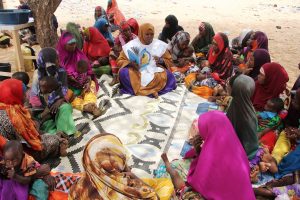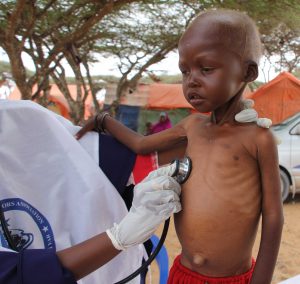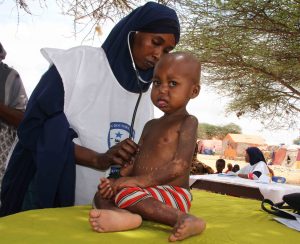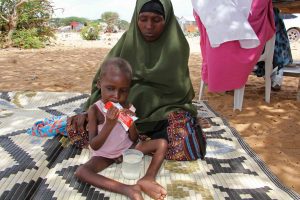As SOYDA continuously carrying outreach integrated service with the new IDP sites in KM13 on the outskirts of Mogadishu where drought-affected people started to arrive in large numbers from Lower Shabelle and Bay regions, both Kahda and Daynile area in KM13 is already overwhelmed by IDPs, SOYDA met today new arrivals of IDPs with three buses carrying IDPs from Jamame and Jilib Districts of Lower Juba Region, Sahal Camp, GPS. N02.06439. E 045.26436
The onset of the drought in south central Somalia led many in a poor state, one of the saddest stories was narrated today by Murayo Ahmed sits her under tree with limited running water, and very poor sanitary conditions, Just four weeks ago, she was the mother of two young children. But the drought has come to and claimed the leaves of one of them. Only a daughter remains now, the others starved to death before Murayo’s very eyes as she and her husband trekked to the Afgooye corridor, Mogadishu, in search of aid.
They began their journey in the Lower Juba region, I f found Mano today looking after one her only remaining cradling them in her arms.
Her family belongs to a tribe of pastoral nomads but with the horn of Africa experiencing one of its worst droughts, all of their livestock have died.
So, like thousands of other Somalis, she and her family decided to make the journey to Km13-17, where humanitarian organizations are providing some aid.
SOYDA provided today free consultations and treatment with severe cases as per attached pictures, most of the screened children were severely malnourished with edema and some of them having medical complications.
Overcrowding and poor sanitary conditions continue to heighten the risk of disease outbreaks within the IDPs and further prevention measures is highly crucial, the dynamic context that IDPs invariably move in and out of within Mogadishu corridor continues to present challenges for stakeholders when meeting the needs of the long-term and newly displaced, and IDPs experiencing recurring displacement, this could also cause double registrations of same patient in different locations as the need of the family is large, blanket feeding is the best way to reduce morbidity and mortality of malnutrition children.










